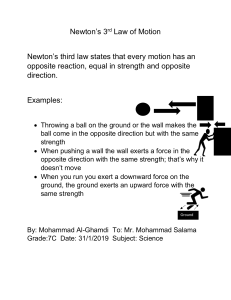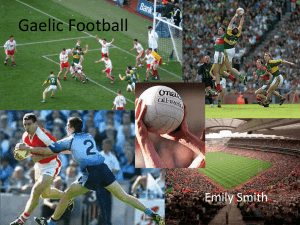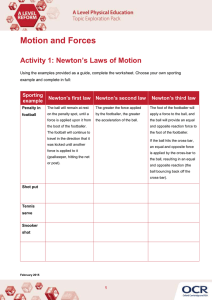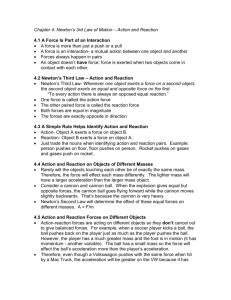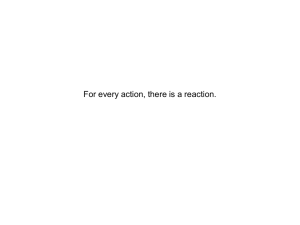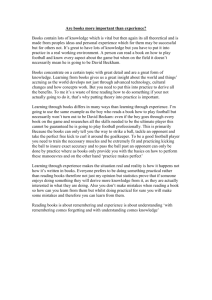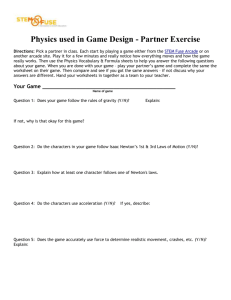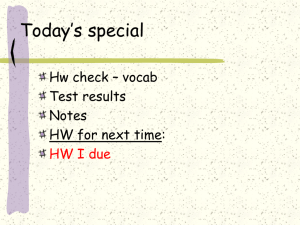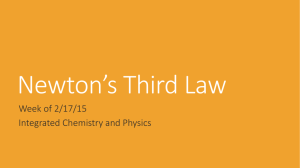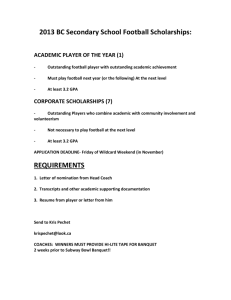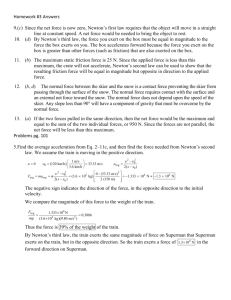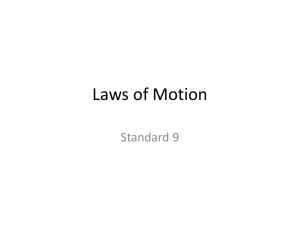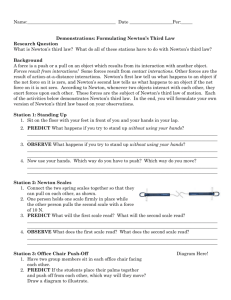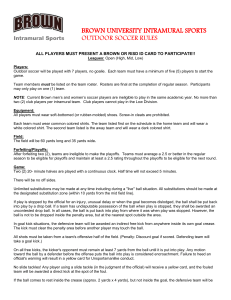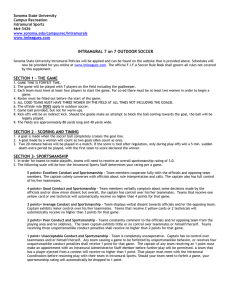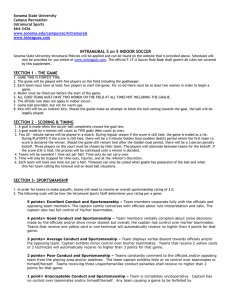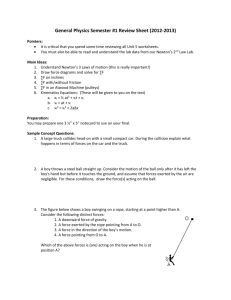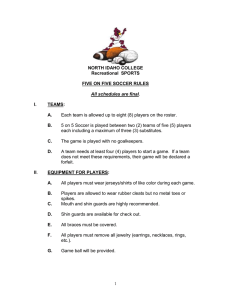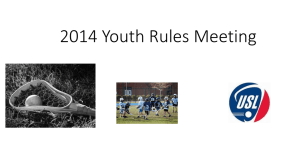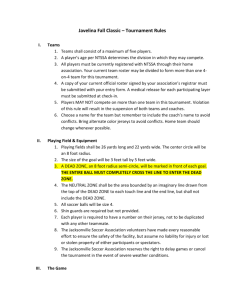Newton's Laws of Motion
advertisement
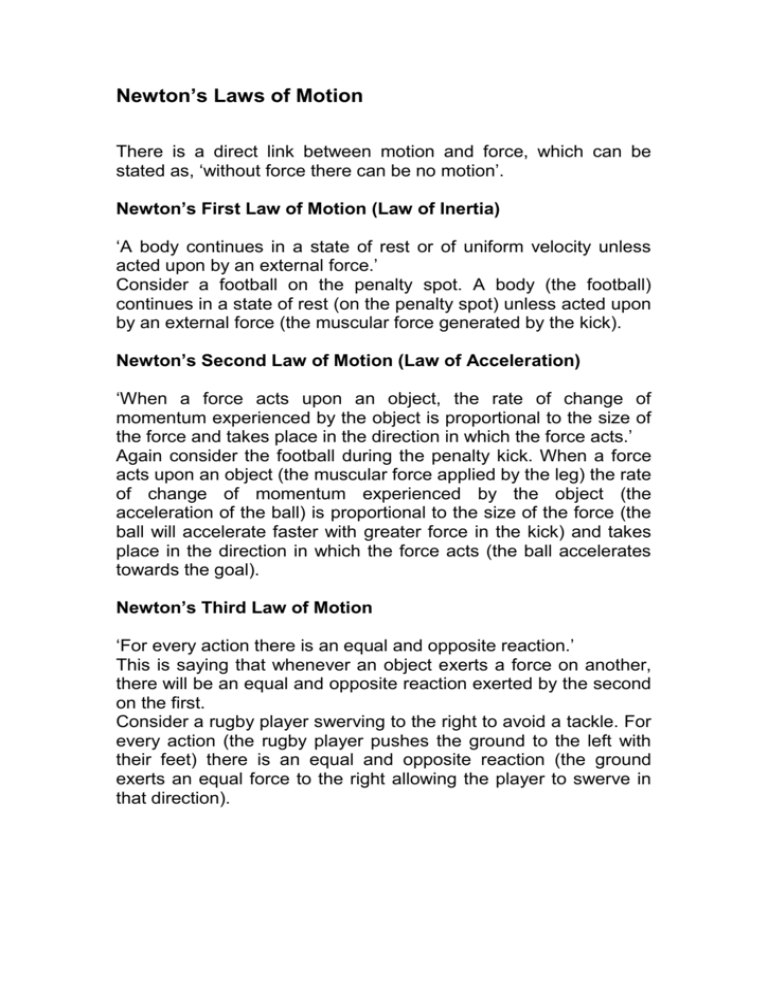
Newton’s Laws of Motion There is a direct link between motion and force, which can be stated as, ‘without force there can be no motion’. Newton’s First Law of Motion (Law of Inertia) ‘A body continues in a state of rest or of uniform velocity unless acted upon by an external force.’ Consider a football on the penalty spot. A body (the football) continues in a state of rest (on the penalty spot) unless acted upon by an external force (the muscular force generated by the kick). Newton’s Second Law of Motion (Law of Acceleration) ‘When a force acts upon an object, the rate of change of momentum experienced by the object is proportional to the size of the force and takes place in the direction in which the force acts.’ Again consider the football during the penalty kick. When a force acts upon an object (the muscular force applied by the leg) the rate of change of momentum experienced by the object (the acceleration of the ball) is proportional to the size of the force (the ball will accelerate faster with greater force in the kick) and takes place in the direction in which the force acts (the ball accelerates towards the goal). Newton’s Third Law of Motion ‘For every action there is an equal and opposite reaction.’ This is saying that whenever an object exerts a force on another, there will be an equal and opposite reaction exerted by the second on the first. Consider a rugby player swerving to the right to avoid a tackle. For every action (the rugby player pushes the ground to the left with their feet) there is an equal and opposite reaction (the ground exerts an equal force to the right allowing the player to swerve in that direction).
